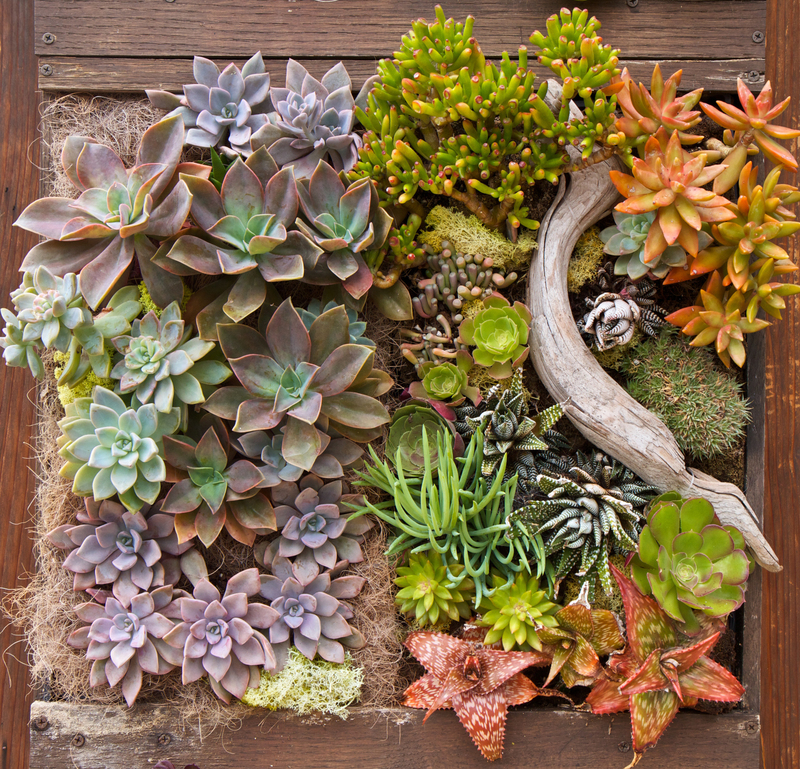How to Plan and Implement a Garden Kids Can Safely Enjoy
Posted on 04/09/2025
Creating a safe and enjoyable garden for children is one of the most rewarding ways to encourage outdoor play, creativity, and appreciation of nature. With careful planning, informed plant choices, and clever design, you can build a child-friendly garden that offers both fun and learning experiences. In this comprehensive article, you'll discover how to plan, design, and maintain a garden kids can safely enjoy, with tips for every step from brainstorming to daily use.
Why Design a Garden Specifically for Kids?
A child-safe garden does more than provide a safe environment; it helps kids develop curiosity, responsibility, and connection with the natural world. Gardens tailored to children's needs offer:
- Safe exploration--away from screens and indoor hazards.
- Opportunities for active play and movement.
- Spaces for learning about plants, insects, and eco-systems.
- Room for creativity and imagination to flourish.
- An area for sensory discovery--textures, scents, colors, and sounds.

Essential Steps in Planning a Child-Friendly Garden
Step 1: Evaluate Your Outdoor Space
Begin by observing and assessing the existing garden. Consider the following:
- Size and Shape: Some gardens are compact, others sprawling; both can be adapted for children.
- Sun and Shade: Track the sunlight throughout the day--children need some sun, but also shaded areas for comfort.
- Soil quality: Healthy plants start with good soil; test it and improve as needed.
- Safety hazards: Remove sharp tools, fragile decorations, and ensure fences or walls are secure.
Step 2: Involve Your Children in the Design
To ensure a garden kids want to enjoy, include them at every stage:
- Ask what games, activities, or plants excite them.
- Let them help with drawing plans or picking seeds.
- Encourage them to suggest colors, smells, or spaces they think would be fun.
- Involvement boosts ownership and pride in their garden.
Step 3: Safe and Age-Appropriate Features
Plan your garden with child safety as the top priority. Consider:
- Soft landings: Use grass, bark, or rubber mulches under play equipment--not concrete or stones.
- Enclosures: Secure fences and gates to prevent children wandering unsupervised.
- Non-toxic plants: Avoid poisonous or thorny species; see our plant suggestions below.
- Accessible paths: Paved or mulched walkways help little feet and strollers alike.
- Visibility: Keep play areas visible from the home for parental supervision.
Designing the Garden: Key Elements for Kids
Plant Selection for a Safe Children's Garden
Some common garden plants are unsafe for kids. When designing a child-friendly outdoor space, choose plants that are both safe and stimulating:
- Edible plants: Strawberries, cherry tomatoes, snap peas, and blueberries are fun and safe to pick and eat.
- Herbs: Mint, thyme, chives, and basil provide delicious scents and tastes.
- Textures: Lamb's ear, ornamental grasses, or succulents like hens-and-chicks invite gentle touching.
- Colorful flowers: Sunflowers, marigolds, zinnias, and nasturtiums add vibrant color.
- Avoid: Foxglove, oleander, castor bean, morning glory, and other toxic species.
*Always double-check plant safety for your region and talk to your local garden center if unsure.*
Active Play Spaces
Include designated zones for activity and movement to ensure the garden is fun for kids of all ages:
- Sandpits or mud kitchens for creative, sensory play.
- Open grassy areas for running, ball games, or tumbling.
- Balance beams made of logs, stepping stones, or stumps for coordination.
- Low swings or climbing frames built for young children.
- Paths for tricycles, scooters, or wheelbarrow play.
Calm and Creative Zones
All the best kid-safe gardens have areas for imagination and relaxation:
- Quiet reading nooks with bean bags or blankets under a large shade tree.
- Living willow dens or hideaways made from trellises covered with sweet peas or morning glories (non-toxic only!)
- Art areas with outdoor easels, chalkboards, or space for nature crafts.
Raised Beds and Gardening Activities
Empower kids to engage with gardening by making it accessible:
- Raised beds and wide containers at child height for easy planting and watering.
- Simple tools--smaller trowels, gloves, and watering cans.
- Mark each child's patch with their name for a sense of ownership.
- Teach kids about composting with a small kid-friendly compost bin.
Making the Garden Safe for All Ages
General Safety Measures
- Secure gates and fences: Install child-proof latches and maintain all boundaries.
- Tool storage: Keep all sharp, heavy, or electrical garden tools in locked sheds.
- Chemical caution: Avoid pesticides or chemical fertilizers; use organic options instead.
- Supervision: Always watch young children; establish garden rules for older ones.
- Stabilize all play equipment and check for wear or instability regularly.
Water Safety
Water features add tranquility, but water is a hazard for young children. For a truly safe, child-friendly garden:
- Avoid deep ponds and unsupervised water features for children under six.
- Consider shallow birdbaths, bog gardens, or pebble streams instead.
- Cover water barrels or tanks securely.
Gardening Activities Kids Love
Once the kid-safe garden is planned, encourage engagement with fun and educational garden projects:
Planting and Care Tasks
- Sowing seeds, watering, and harvesting crops they have grown themselves.
- Counting and sorting gathered leaves, flowers, or produce.
- Learning to compost and recycle organic waste.
Nature Scavenger Hunts
Prepare treasure hunts for different textures, colors, or smells--search for five soft leaves, three yellow flowers, or the first bee of spring.
Wildlife Watching
- Install bee hotels, butterfly houses, or bird feeders and record the visitors observed.
- Grow plants that attract pollinators, like lavender or marigolds.
Art and Craft with Nature
- Leaf rubbings, flower pressing, or constructing bug hotels from sticks and pinecones.
- Paint rocks as garden markers or decorations.
Seasonal Considerations for a Kids' Garden
A garden that children can safely enjoy evolves throughout the year. Plan for:
- Spring: Seed sowing, planting bulbs, butterfly watching.
- Summer: Water play, harvesting fruits, sunflower races.
- Autumn: Gathering leaves, planting spring bulbs, making leaf art.
- Winter: Bird feeding; install simple wind chimes or nature mobiles.
Maintenance for a Safe and Enjoyable Garden
Maintaining a child-safe and fun garden means ongoing attention:
- Inspect play equipment, paths, and fences monthly.
- Remove weeds and check for new hazardous plants that may self-seed.
- Keep paths and surfaces clear of trip hazards like roots or fallen branches.
- Prune overgrown areas for better visibility and access.
- Refresh soft surfaces like mulch or sand as they wear down.

Frequently Asked Questions About Kid-Friendly Gardens
What are the best plants for a children's garden?
The ideal plants are non-toxic, hardy, and engaging. Choose edible crops (strawberries, carrots, lettuce), herbs (chives, mint), and sensory plants (lamb's ear, nasturtium). Avoid any with thorns or toxic sap.
How do I keep my kids safe around garden tools?
Store adult tools out of reach in a locked shed and provide child-sized, lightweight tools. Always supervise young children while gardening.
How can I make my garden educational as well as safe?
Create spots for observation (butterfly gardens, weather stations), signage with plant names, and provide journals for kids to record observations. Hands-on involvement is the best teacher.
What if I have a very small garden or only a balcony?
You can still have a safe and fun children's garden using containers, window boxes, or vertical planters. Focus on portable sand and water play or herb gardens in pots.
Summary: Your Garden, Their Playground
Creating a garden your kids can safely enjoy is about balancing safety, creativity, and natural beauty. With thoughtful planning, child participation, careful plant choices, and clear safety measures, your garden becomes a place where children not only play, but learn and grow.
Ready to transform your outdoor space into the ultimate child-friendly oasis? Start today with these comprehensive tips, and watch as your garden brings joy, safety, and adventure to the whole family!

